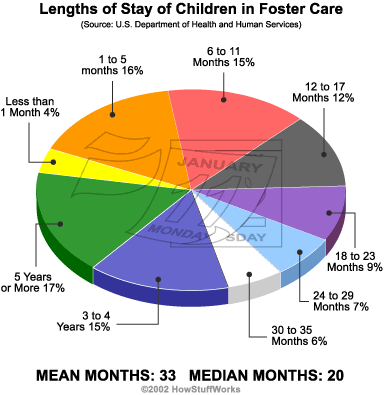
 BY JEFF DEENEY The most recent assault on institutional incompetence at DHS by the press comes this time from the Daily News in the form of a case study of sexual abuse against children placed into foster care by the agency. This information shouldn’t come as a surprise to anyone familiar with how DHS resorted to removing children from homes en masse after scandal broke in 2007 about social workers, supervisors and even directors asleep at the wheel while children died on the agency’s watch. In a previous editorial I argued that increasing removals was an extremely unwise approach to solving the problem of kids turning up dead, a band-aid that didn’t really address any of the core issues surrounding the breakdown of service provision at the agency.
BY JEFF DEENEY The most recent assault on institutional incompetence at DHS by the press comes this time from the Daily News in the form of a case study of sexual abuse against children placed into foster care by the agency. This information shouldn’t come as a surprise to anyone familiar with how DHS resorted to removing children from homes en masse after scandal broke in 2007 about social workers, supervisors and even directors asleep at the wheel while children died on the agency’s watch. In a previous editorial I argued that increasing removals was an extremely unwise approach to solving the problem of kids turning up dead, a band-aid that didn’t really address any of the core issues surrounding the breakdown of service provision at the agency.
At that time the primary issue at the agency, as I saw it, was that it had farmed out its basic function of being present the homes of abused children providing direct monitoring, supervision and interventions to contractor agencies often with no core competency in child welfare. These agencies employ low wage, low skill “SCOH” (Services to Children in their Own Homes) workers to do what used to be a social worker’s job, and as a result service quality deteriorated. DHS subsequently became unable to quality control the massively complicated network of contractor agencies they came to employ, and as a result basically had no idea what was happening in many of their client family houses where children were still being abused and/or neglected.
In reaction to heat from the press, DHS started pulling kids and placing them in foster care, despite research suggesting that family preservation is a key to positive outcomes for abused  children. This sudden flood of children into the foster system may have caused a drop in the quality of foster families. An advocate for family preservation, Richard Wexler from the National Coalition for Child Protection Reform is quoted in the Daily News article saying:
children. This sudden flood of children into the foster system may have caused a drop in the quality of foster families. An advocate for family preservation, Richard Wexler from the National Coalition for Child Protection Reform is quoted in the Daily News article saying:
“Philadelphia takes away children at, by far, the highest rate of any major city. The more you overload your child-welfare system with children who don’t need to be there, the greater the likelihood of abuse. There are two reasons for that: You put your DHS in a position where they are begging for beds. Beggars can’t be choosers, so there is an enormous incentive to lower standards for foster parents. The other problem is if you have too many children coming in, you cannot be careful about which foster children you put with other foster children. And one of the biggest problems in foster care is foster children abusing other foster children. The only way to fix foster care is to have less of it.”
Wexler feels that children are being taken out of perfectly safe homes for no good reason. How can that happen?
One way for DHS to pull a kid from a home where no obvious abuse is taking place is to issue an ultimatum to the family ordering them to move from what is deemed to be unsafe housing or have their children removed from the home. Unsafe housing is sort of like a trump card that DHS can hold over families. Basically, most families on DHS’s caseload live in what could be considered unsafe housing. DHS families are typically very poor and live in neighborhoods where the housing stock is aged and decaying, drugs are dealt, and violence is high. If a DHS social worker pulls up to a client house and feels threatened because there are dealers selling drugs nearby, a case can be made for unsafe housing.
Back in 2007 when the numbers of children being placed into foster care was on the rise, I was working for an agency that provided housing services for homeless families. We started getting calls from frantic DHS families who were told their housing was unsafe and their kids would be removed if they didn’t relocate. The families couldn’t relocate on their own because they didn’t have the money. We tried to work with DHS to keep these families together; DHS promised stipends to cover the relocation costs, but the stipends never materialized. We were left to decide whether to relocate the family using our agency’s far more meager funding or let the clock run out and the children be placed in foster care.
That there are children being sexually abused by both their caretakers and other children in Philadelphia foster homes shouldn’t come as a surprise. To properly foster an abused or neglected child a family has to make a tremendous commitment. Children placed into foster care are typically traumatized and often have behavioral problems or mental health disorders. The kind of families who can provide the kind of patient and attentive care these kids need don’t grow on trees, and when you start dumping kids into foster homes by the truckload naturally the families providing that care are going to decline in quality.
In the neighborhoods it’s known among poor families that one way to get more money coming into the house is to take in a foster kid. DHS provides foster families with funding for expenses related to raising the child, which, if you are more or less starving the child, you can pocket. One family in the Daily News article forced the child to eat at school rather than at home; the Daily News didn’t state that this was so the family could keep the food money allotted to them by the agency, but that’s what it was. Shitty foster families see children as little ATM machines that they can milk for extra cash. Such families shouldn’t be allowed to foster a child, but, as Rich Wexler from the NCCPR said, beggars can’t be choosers.
After the Charlenni Ferreira scandal broke I immediately called for an accounting of what changes have occurred at DHS since Mayor Nutter made a show of camping out at the agency for a week after his election. Coincidentally, I’m sure, the Inquirer ran an editorial attempting to do just that a few days later. David Sanders, the chairman of the DHS Community Oversight Board stated that in addition to new child fatality review procedures, the agency made other reforms including, “Timely responses in cases of children under 5. Better child safety assessment. Consistent handling of hotline calls. A new internal division focused on monitoring the department’s performance. A new case review process that will allow DHS to continuously improve and learn from its casework. Better tracking and use of data to improve services and identify problems. Fewer children in foster care and more adoptions; for the first time in a generation, fewer than 6,000 Philadelphia children were in foster care at the end of last year, and adoptions increased by 11 percent.”
It now seems bizarre that DHS was touting their numbers of children in foster care as a success when the numbers are in fact far higher than the national average. Maybe he meant that the numbers of children in foster care are down from recent, even higher rates? Regardless, the issue of how many children are in foster care and how the agency is making sure they are safe is clearly still an issue. And did you notice what else was missing from Sanders’s accounting? That’s right, how if at all has DHS reined in its massively unwieldy network of largely incompetent contracted services providers who got the agency into this mess in the first place? Still no word on that.
